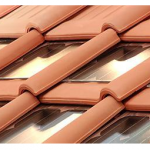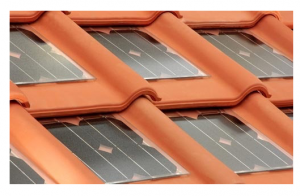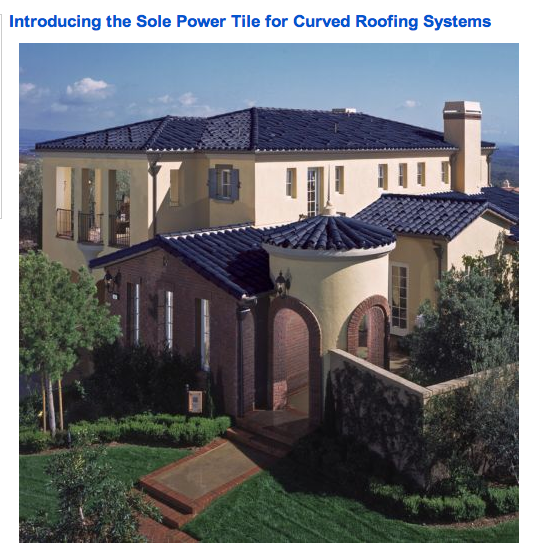Alternatives to Solar Electric Panels
Less Costly Ways to Save Home Energy, Solar and Non-Solar
 Every year about two dozen Piedmont families install solar panels on their homes. On Thursday, January 29, 2009, Piedmonters were invited to an event at the Community Hall sponsored by the City.* Dozens of residents attended the meeting to learn about solar electric panels that could provide an alternative source of energy for their homes.
Every year about two dozen Piedmont families install solar panels on their homes. On Thursday, January 29, 2009, Piedmonters were invited to an event at the Community Hall sponsored by the City.* Dozens of residents attended the meeting to learn about solar electric panels that could provide an alternative source of energy for their homes.
The sales team making the presentation told the Piedmont audience that a 300-square-foot roof installation of their panels (15 x 20 foot or 10 x 30 foot arrays) on the roof of a Piedmont house would cost approximately $30,000. The cost-benefit to any Piedmont household depends entirely on the patterns of energy use, with the biggest users benefiting the most.
The panels are mounted above the roof, facing the predominant sun exposure. Solar electric panels require maintenance three to four times a year and the inverter must be replaced after a dozen years or more. In early 2009, the cost to remove the panels for roof repair or maintenance was estimated to be $5,000 – $6,000. For that reason, it was recommended that homeowners re-roof their homes prior to installing solar panels.
Piedmonters who attended the meeting were given a lavish brochure that included a DVD presentation of the vendor’s products and various offers and discounts for Piedmonters who contracted for their products. Without providing payback time or reduced PG&E bill specifics, the colorful brochure offered encouraging statements such as, “By lowering your electric bills, solar pays for itself and offers protection against future rate hikes.” and “throughout the U.S. , there are numerous government financial incentives that can help reduce your solar systems cost from 25 to 40%.” The first 20 Piedmont customers were offered a $.20 per watt discount for their solar electric panel installation.
Coincidentally, on the same day of its sales presentation to Piedmonters in the Community Hall, the vend0r was laying off 60 employees, primarily from its Milpitas factory. Two years later, in April 2011, the capitalization of the company received a big boost from the announcement of a $1.187 billion loan guarantee (twice the amount of a highly publicized loan guarantee to another local solar company) from the U.S. Department of Energy (DOE). Once the loan guarantee was announced, the French energy giant Total purchased a 60% share of the vendor presenting in Piedmont, a deal variously reported as $1.3 billion or $1.4 billion, paying $23.25 per share. After the U.S. government loan guarantee, production was expected to increase in a factory in Mexicali, Mexico.
While the DOE provided large loan guarantees ranging upwards from $46 million (and for seven solar companies, well over $1 billion), integrated solar roof materials in the style of slate, tile and other materials (illustrated here) had become available several years prior to 2009. These integrated roof materials eliminate the need to replace a functional roof prior to installing solar panels or, alternatively, to remove and reinstall the large array of traditional panels to perform roof maintenance or replacement. In addition, the tiles and shingles are aesthetically consistent with the roof materials and profiles common in Piedmont.
 Solar electric panels were not considered the most cost effective energy conservation recommendation at the League of Women Voters “Reduce, Reuse, Recycle” Bay Area League Day program on January 29, 2011. Dan Reicher, executive director of the Steyer-Taylor Center for Energy Policy and Finance at Stanford University, and Arthur Rosenfeld, recipient of the 2006 Enrico Fermi award for contributions to the science of energy efficiency, director of the Center for Building Science at Lawrence Berkeley National Laboratory, and senior adviser to the U.S. Department of Energy on Energy Efficiency and Renewable Energy from 1994-1999, advocated passive energy conservation methods. Rosenfeld complained, “There is too much high cost solar
Solar electric panels were not considered the most cost effective energy conservation recommendation at the League of Women Voters “Reduce, Reuse, Recycle” Bay Area League Day program on January 29, 2011. Dan Reicher, executive director of the Steyer-Taylor Center for Energy Policy and Finance at Stanford University, and Arthur Rosenfeld, recipient of the 2006 Enrico Fermi award for contributions to the science of energy efficiency, director of the Center for Building Science at Lawrence Berkeley National Laboratory, and senior adviser to the U.S. Department of Energy on Energy Efficiency and Renewable Energy from 1994-1999, advocated passive energy conservation methods. Rosenfeld complained, “There is too much high cost solar  paneling, when the appliances, windows and insulation are more important and cost effective.” Instead of mounting panels on the roofs of houses, well-positioned skylights with operable insulated shades inside offer passive solar gain for task lighting and heat with the insulated covering preventing heat loss at night or unwanted heat gain in summer.
paneling, when the appliances, windows and insulation are more important and cost effective.” Instead of mounting panels on the roofs of houses, well-positioned skylights with operable insulated shades inside offer passive solar gain for task lighting and heat with the insulated covering preventing heat loss at night or unwanted heat gain in summer.
California has exempted solar companies from state sales tax, an additional incentive for solar energy.
________________________________________________________________________________
* The meeting was reported in the General Plan Housing Element adopted June 6, 2011 on page 2-16: “… [the] City has sponsored presentations by solar energy contractors/vendors at Piedmont Community Hall.”



